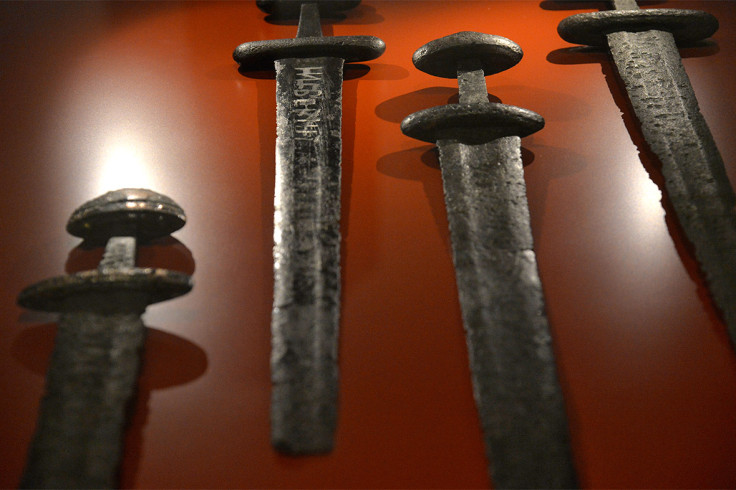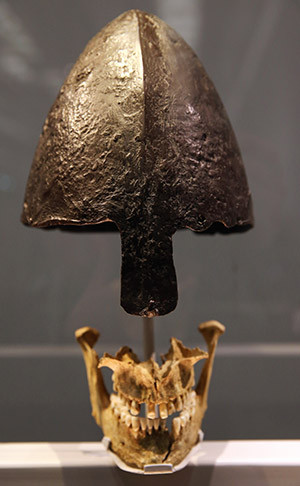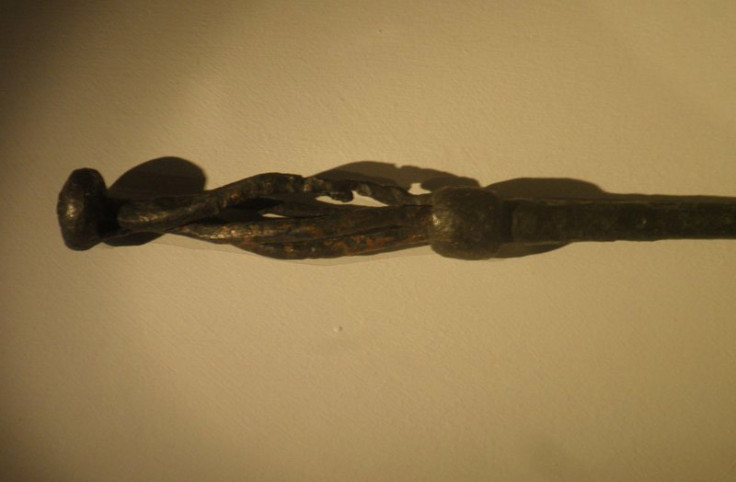A Private Tour of the British Museum's New Viking Exhibition: Swords, Skulls, Booty and Punk Rock

Opening today in the British Museum's brand-new Sainsbury Exhibitions Gallery, Vikings: Life And Legend is one of this year's must-sees. It features all the swords and skeletons you'd expect from warriors who rampaged up and down the English coast and briefly took control of London, but also sumptuous gold bling, the intricately carved Lewis chess pieces, the first public display of the Vale of York Hoard, and the longest Viking ship ever discovered. There's even a special Vikings' Feast set menu at the British Museum's revamped Great Court Restaurant.
Before the opening, I was given a private tour by the exhibition's ebullient curator, Gareth Williams. Gareth has been with the British Museum since 1996, specialising in coins, which is how he came to play a pivotal role in unearthing the Vale of York Hoard; he has co-authored a book on the subject.
A great, bearded Brian Blessed of a man, my guide approaches everything with enormous energy and humour, and has an innate sense of theatre as he conjures up Viking lives from the air: it's no surprise to learn that he is also actively involved in historical re-enactment...
"The underlying message of the exhibition," begins Williams, "is that although 'Viking' literally means 'pirate' or 'raider', it's more complex than just people who turn up out of nowhere, hit people over the head and vanish again. They were also farmers, traders and settlers.
"They didn't just exist in isolation, but interacted with other countries and learned from them. We show a Viking world that extends from Eastern Canada to Uzbekistan, and from the Arctic Circle down to North Africa."

Gareth continued: "It's with great pride that we show the Vale of York Hoard in its entirety for the first time. I personally helped unpack it after it was discovered in 2007. Everything you see here was stuffed in a cup, and wrapped in lead for protection. It stayed like that for a thousand years until someone hit it with a plough, after which it was found with a metal detector. At first they thought it was a ballcock – until they realised that ballcocks don't usually have Anglo-Saxon coins falling out of them.
"This one display sums up the whole exhibition: there are coins here from as far as Samarkand. And while some coins are Islamic, the cup is Christian, and there are some coins in the name of St Peter but with a little Thor's hammer – Christianity was very adaptable in those days, it's like they were saying you can carry on worshipping Thor as long as you call him St Peter."

"This is the largest Viking ship ever found: the keel alone is longer than most Viking ships. It's from the time when there was a single Viking Empire under Cnut The Great. I wonder if perhaps the ship was made for him, if he was celebrating by building the greatest ship ever seen.
"The Vikings were a maritime society, their ships are absolutely central; that's why a broach fashioned like a ship is the first object you see in the exhibition. Their boats were so versatile they could travel across river systems, not just the open sea, and that way the Vikings penetrated all the way down Russia to Byzantium [now Istanbul], which they called Miklagard, 'the great city'.

"Notice how the front teeth on the jawbone have been filed across, with horizontal marks. There were a number like this found in Viking graves, and we think it's because when they bare their teeth in battle – or even smile menacingly at someone in a tavern – it's very scary. The message is, 'if I can do this to myself, what will I do to you?'
"It's a bit like a punk with a safety pin through his cheek, it's meant to be intimidating. So you see, the Vikings didn't just invent international trade, they invented punk as well!"

Gareth is also quick to scotch the notion that the Vikings were a parochial society, limited in cultural and geographical reach.
"I'm sure you know all about the Norse Gods: Odin, who gave his name to 'Wednesday', from 'Odin's Day'; Thor, who before all those blockbuster films gave us 'Thursday' or 'Thor's Day'. These myths are Germanic in origin, as you'll know from Wagner operas. But recent research has pointed out that the Vikings themselves were much more diverse, ethnically, than we had thought, and their belief systems have more in common with shamanism found on the Arctic fringe.
"We hear of sorcerers casting charms before battles, or for fertility. With regards to the latter, Freud might have something to say about the shape of the base of their staffs! We also hear of them having out-of-body experiences, which makes more sense when you realise the little boxes we also have on display contained henbane, a hallucinogenic plant."
The British Museum's Vikings: Life and Legends is on March 6-June 22. https://www.britishmuseum.org/exhibitions-events.
© Copyright IBTimes 2025. All rights reserved.





















